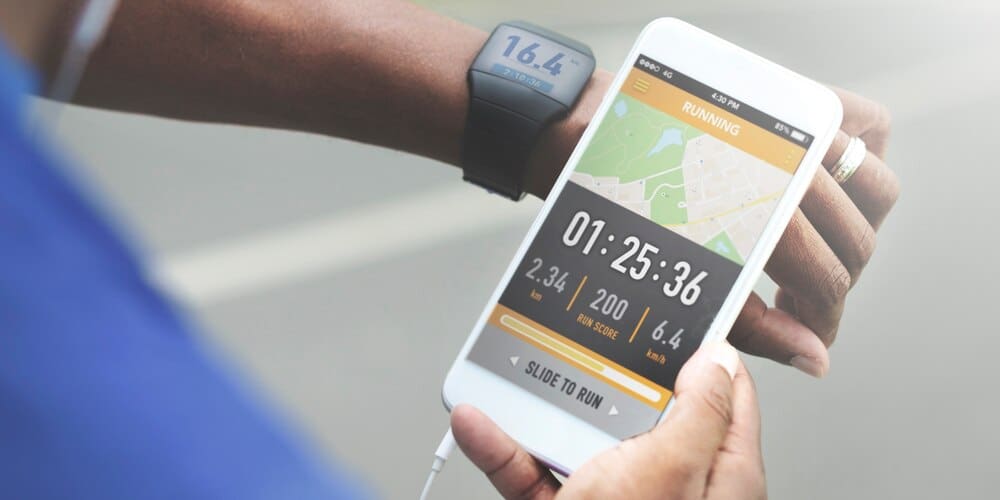For the millions of runners who meticulously track their mileage, pace, and heart rate, a new form of data has become just as critical: their financial data. The ultimate FinTech “stack”—a curated suite of financial technology apps and services—is emerging as an essential tool for the modern runner, transforming their passion from a potentially expensive hobby into a financially optimized and rewarding lifestyle. This integrated system, accessible from a smartphone and often connected to a wearable device, allows runners to automate savings for race fees, earn tangible rewards for their daily miles, and invest for the long term, all while leveraging the same discipline and goal-oriented mindset that fuels their training.
What is a FinTech Stack and Why Do Runners Need One?
In the world of technology, a “stack” refers to a combination of software and services used to achieve a specific outcome. For a runner, a FinTech stack is a personalized collection of digital banking, investing, rewards, and budgeting tools that work in concert to manage their financial life. It’s a system designed not just for general financial health, but one specifically tailored to the habits and goals of an athlete.
Runners are, by nature, planners and data enthusiasts. They create detailed training schedules, analyze post-run analytics, and set ambitious goals, whether it’s a 5K personal best or a marathon finish line. This inherent discipline makes them ideal users of FinTech, which thrives on consistency, automation, and goal-setting.
A dedicated stack helps solve a common runner’s dilemma: the cost. Between high-performance shoes that need frequent replacement, race entry fees, GPS watches, technical apparel, and travel for destination races, running can become a significant expense. A well-designed FinTech stack helps offset these costs, automates savings for big-ticket items, and even generates rewards directly from the act of running itself.
The Core Components of the Runner’s Stack
Building the perfect stack involves selecting best-in-class tools for different financial jobs. Each component serves a unique purpose, but when combined, they create a powerful, automated system that aligns a runner’s physical activity with their financial well-being.
The Foundation: A Digital-First Bank
The bedrock of any modern FinTech stack is a digital-first bank or a traditional bank with powerful digital features. Institutions like SoFi, Ally, or Chime are built for the mobile world, offering low or no fees, high-yield savings accounts (HYSAs), and intuitive apps that make money management seamless.
For a runner, the key feature is the ability to create specific savings goals or “buckets.” Instead of a single, amorphous savings account, you can create dedicated funds for “Boston Marathon 2025,” “New Garmin Watch,” or “Fall Running Gear.” This psychological trick makes saving more tangible and motivating, much like seeing a race on the calendar.
These banks also offer features like automatic transfers, allowing a runner to schedule a small deposit into their “Race Fee” bucket every payday, ensuring the funds are there when registration opens.
The Engine: Rewards and Cashback
This is where the stack truly starts working for the runner, turning everyday spending and physical activity into a source of value. This layer is about maximizing returns on money you are already spending and getting paid for the miles you are already running.
Activity-Based Rewards Apps
The most revolutionary component of a runner’s stack is an app that directly monetizes fitness. Paceline is a leader in this space. By securely connecting to a wearable like an Apple Watch or Garmin, the app tracks your activity. When you hit a weekly goal of 150 elevated heart-rate minutes—a target easily achieved by most consistent runners—you unlock rewards.
These aren’t just abstract points; they are valuable gift cards and discounts from brands runners love, such as adidas, Lululemon, and Whole Foods. In effect, your weekly long run and daily jogs are directly contributing to lowering the cost of your next pair of shoes or your post-run smoothie.
Cashback Credit Cards and Extensions
Strategic credit card use is another critical element. A runner should look for a card that offers elevated rewards on their most frequent purchases. This could be a card with 3% cashback on online shopping for buying gear from retailers like Zappos or Nike, or one that rewards spending at grocery stores for healthy fuel.
To amplify these rewards, browser extensions like Rakuten or Honey are essential. Before buying a new pair of Hoka shoes or a set of GU energy gels online, a runner can activate Rakuten to earn an additional layer of cashback—often between 2% and 10%—on top of their credit card rewards. This simple, two-second step can save hundreds of dollars over a year of gear and nutrition purchases.
The Long Run: Investing and Savings Automation
Just as marathon training is about building endurance over months, building wealth is a long-term endeavor. A runner’s FinTech stack should automate this process, making it as effortless as lacing up for a familiar route.
Micro-Investing Apps
Apps like Acorns and Stash are perfect for runners who want to invest without thinking about it. The signature feature of Acorns is “Round-Ups.” When you buy a post-run coffee for $4.50, Acorns rounds the purchase up to $5.00 and automatically invests the spare $0.50 into a diversified portfolio.
These tiny, almost unnoticeable investments accumulate powerfully over time, thanks to the principle of compound interest. It’s the financial equivalent of building mileage one run at a time—the small, consistent efforts lead to a significant outcome down the road.
Algorithmic Savings Tools
For larger, medium-term goals like a destination race in another country, algorithmic savings apps like Digit or Qapital are invaluable. After connecting to your primary bank account, these tools analyze your income and spending patterns. They then use an algorithm to identify small, safe amounts of money to pull into a separate savings account.
You simply set the goal—for example, “$2,000 for the Berlin Marathon”—and the app works quietly in the background to help you reach it. This removes the friction and forgetfulness often associated with manual saving, putting your financial progress on autopilot.
The Performance Tracker: Budgeting and Expense Management
You can’t improve what you don’t measure. Runners know this from tracking their splits and mileage. The same principle applies to finance, and modern budgeting apps are the equivalent of a GPS watch for your money.
Apps like YNAB (You Need A Budget), Copilot Money, or Mint provide a comprehensive view of your financial health. They automatically categorize transactions from all your connected accounts, allowing you to see exactly where your money is going. A runner can create a “Running” budget category to track spending on gear, races, and nutrition.
This insight is powerful. It can reveal if you’re overspending on non-essential gear or, conversely, that you have more room in your budget for that race you’ve been dreaming of. It provides the data needed to make informed financial decisions, just as a heart rate monitor provides data to adjust training intensity.
Putting It All Together: A Week in the Life
The true power of the stack is how its components interact seamlessly. Imagine a typical week for a runner using this system:
- Monday: A quick glance at the Copilot app shows that last week’s spending was on track, with the “Running” category well within its monthly budget.
- Wednesday: After a tempo run, the runner buys a smoothie for $8.25. Their Acorns account automatically rounds it up and invests the $0.75.
- Friday: They decide to buy new trail shoes online. They click the Rakuten extension to activate 6% cashback and pay with a credit card that earns 2% on all purchases.
- Sunday: The weekly long run is complete. A notification from Paceline confirms they’ve hit their 150-minute activity goal, unlocking a $10 adidas gift card, which they apply toward their next gear purchase. Meanwhile, Digit has quietly moved another $15 into their “Chicago Marathon” fund.
The Future is Integrated
The intersection of fitness and finance is only growing stronger. We are moving toward a future where the data from our bodies will have an even more direct impact on our wallets. Insurance providers like John Hancock already use the Vitality program to offer lower premiums and rewards to customers who demonstrate healthy habits through activity tracking.
Soon, we may see deeper integrations where fitness apps like Strava offer financial products directly, or where completing a virtual race could unlock preferential rates on a personal loan. The core idea remains the same: your physical efforts can and should produce a financial return.
Conclusion: From Hobby to Asset
A thoughtfully constructed FinTech stack fundamentally changes a runner’s relationship with their finances. It transforms what could be a costly hobby into a financially productive ecosystem where every mile run contributes to a goal, every purchase is optimized for value, and long-term financial security is built automatically. By applying the same principles of discipline, data analysis, and goal-setting from their training to their finances, runners can ensure they are winning not just on the course, but in their financial lives as well.







